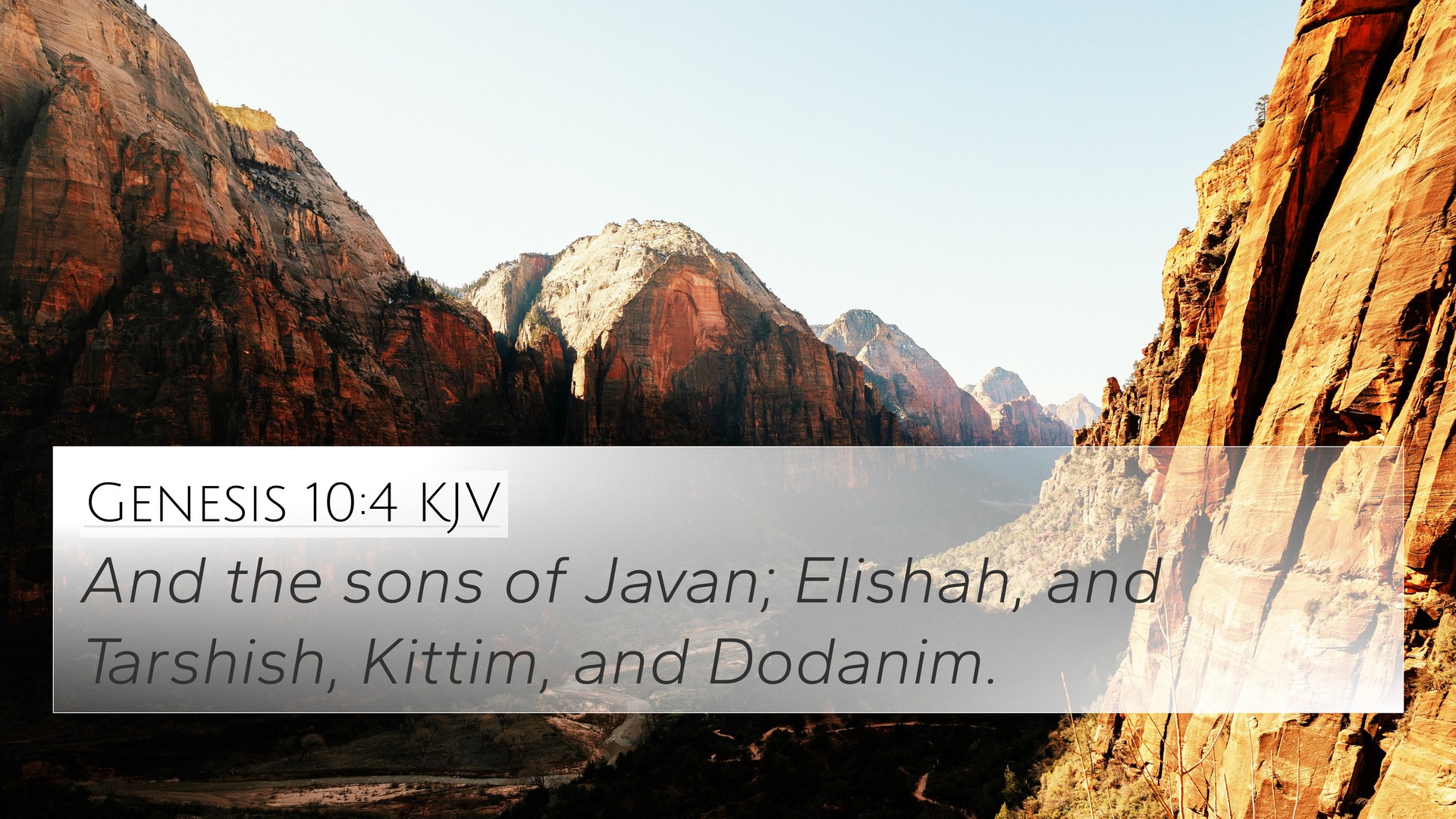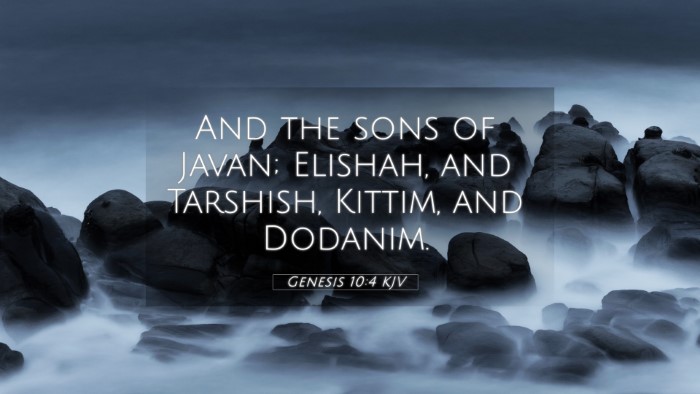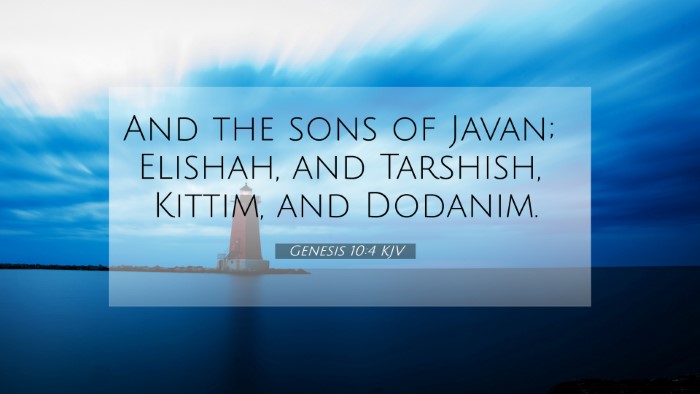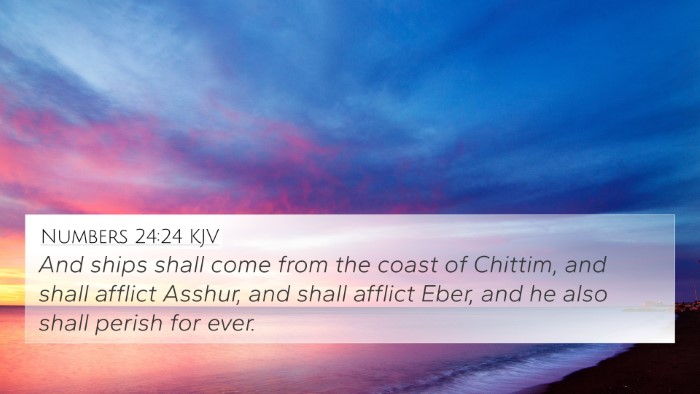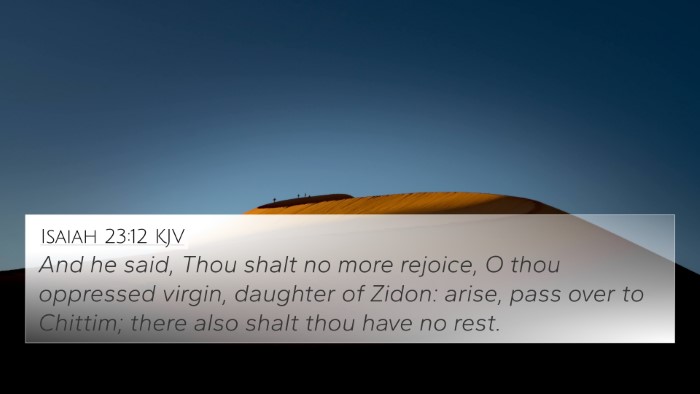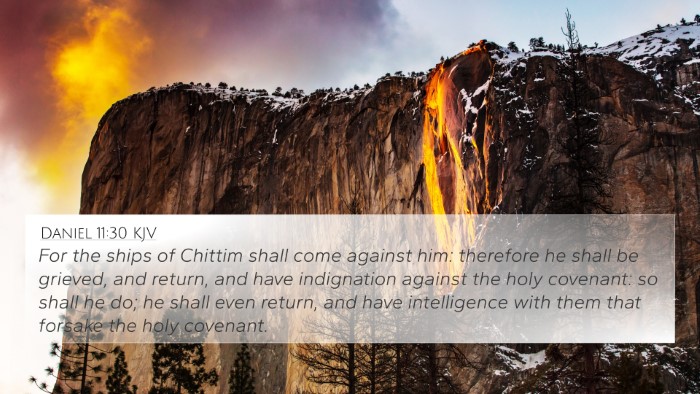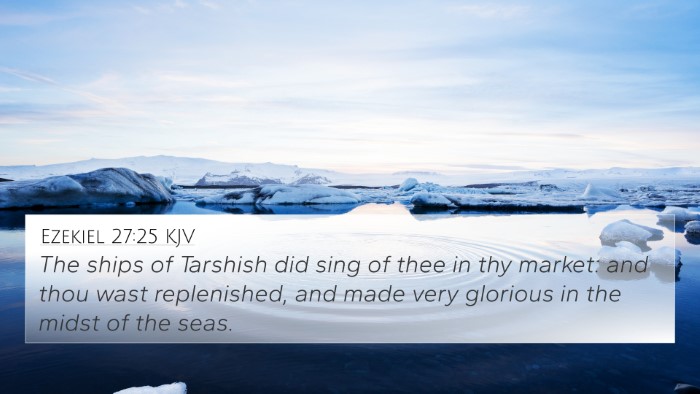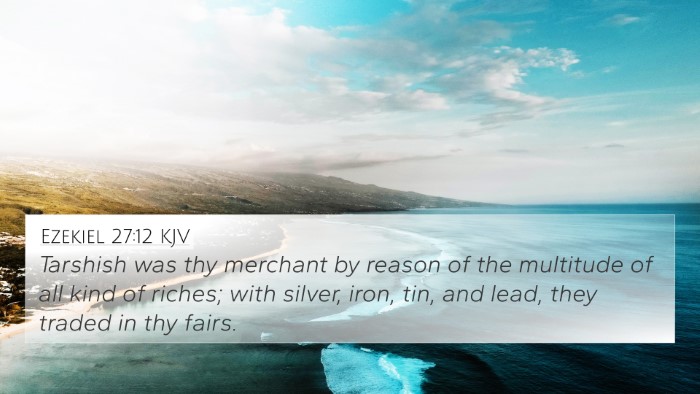Understanding Genesis 10:4
Genesis 10:4 states:
"And the sons of Javan; Elishah, and Tarshish, Kittim, and Dodanim."
This verse is part of the genealogical accounts found in the Book of Genesis, providing insight into the descendants of Noah’s sons after the flood. The descendants mentioned here are particularly notable in the context of Biblical history and geography.
Summary of Key Themes
- Genealogy: This passage illustrates the expansion of humanity through Noah's descendants.
- Geographical Context: The names mentioned correlate to various nations and tribes, revealing the distribution of people through the ancient world.
- Historical Significance: Understanding these lineages helps connect historical, cultural, and prophetic undertones within scripture.
Commentary Insights
Matthew Henry Commentary
Matthew Henry emphasizes the importance of genealogies in understanding the history of nations and the fulfillment of God's promises. He notes that the descendants of Javan are significant as they symbolize the expansion of both trade and culture, pointing to the interconnectedness of nations.
Albert Barnes Commentary
Albert Barnes elaborates on the geographical implications of the names. He associates 'Elishah' with regions likely near Greece, and 'Tarshish' with areas in the far west, possibly linked to trade routes that were pivotal in biblical times. Barnes highlights that this section of Genesis represents not only physical lineages but also cultural exchanges that occurred among these nations.
Adam Clarke Commentary
Adam Clarke provides further details on the descendants mentioned. He notes that 'Kittim' often refers to Cyprus, an important center for maritime trade in the ancient world. Clarke points out that the mention of these nations reflects God's sovereign design in populating the earth and spreading various cultures.
Bible Verse Cross-References
This verse connects to several other scriptures, providing a broader narrative and corroborating themes:
- Isaiah 66:19: Refers to the nations that will hear of God's glory.
- Ezekiel 27:6: Discusses ships of the sons of Tarshish, emphasizing maritime commerce.
- Daniel 11:30: Mentions ships of Kittim showcasing their significance in historical conflicts.
- 1 Chronicles 1:7: Reiterates Javan’s descendants, affirming the genealogical listing.
- Revelation 18:11: Connects the trade relationships with the downfall of Babylon, highlighting the lasting impact of these nations.
- Acts 2:9-11: References the presence of different nationalities at Pentecost, hinting at the dispersion mentioned in Genesis.
- Genesis 10:2: Mentions the initial descendants of Japheth, establishing a broader genealogical context.
- Exodus 30:34-36: Introduces the concept of trade commodities associated with these regions.
- Jeremiah 10:2: Warns against the customs of the nations, reflecting the diversity of cultures traced back to Javan.
- Psalms 72:10: Speaks of kings from Tarshish bringing gifts, symbolizing the wealth of nations that descended from Javan.
Connecting Themes and Cross-Referencing Biblical Texts
The genealogies in Genesis serve not only to trace lineage but also to understand the interactions and cultural exchanges between these early nations. The thematic connections between Genesis 10:4 and other Scriptures illustrate how the diversity of the world's nations is part of God’s greater plan. This interconnected narrative encourages us to see the Bible as a comprehensive text that communicates overarching truths about God’s relationship with humanity.
Exploring the Connections
Analyzing Genesis 10:4 within the framework of Bible verse connections and cross-referencing Biblical texts enables deeper insights. Scholars and readers alike can use tools such as Bible concordance and Bible cross-reference guides to navigate these complexities. Understanding how to identify relationships between verses opens pathways for richer Bible study and sermon preparation.
How to Use Bible Cross-References
To delve deeper into the meanings and themes presented in Genesis 10:4, consider these approaches:
- Comparative Bible verse analysis: Look for parallels and contrasts between genealogies and prophetic texts.
- Bible cross-reference system: Utilize a systematic approach for cross-referencing, highlighting connections as you study.
- Cross-referencing Bible study methods: Engage in group discussions to uncover diverse interpretations and applications.
- Bible chain references: Trace themes and topics from verse to verse, allowing for a comprehensive understanding of biblical narratives.
Conclusion
Genesis 10:4 serves as a doorway into the multi-faceted world of biblical genealogies and their relevance. The connections it generates with other scriptures can lead to a deeper understanding of biblical history, culture, and theology. By mastering the skills of identifying connections between Old and New Testament texts and engaging in inter-Biblical dialogue, we enrich our appreciation of God's Word and its continuity throughout history.
As we explore these themes, may we gain insights that inspire us to engage with the Bible more critically and faithfully.
